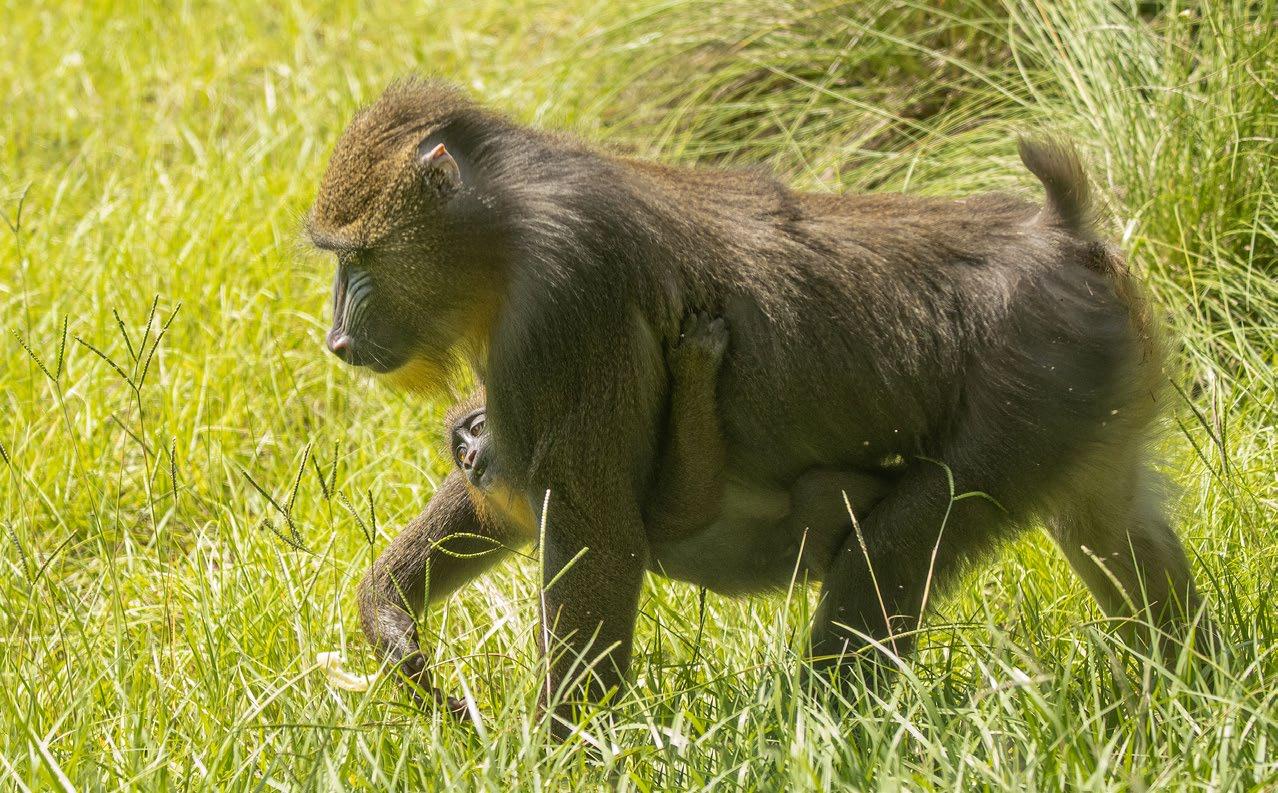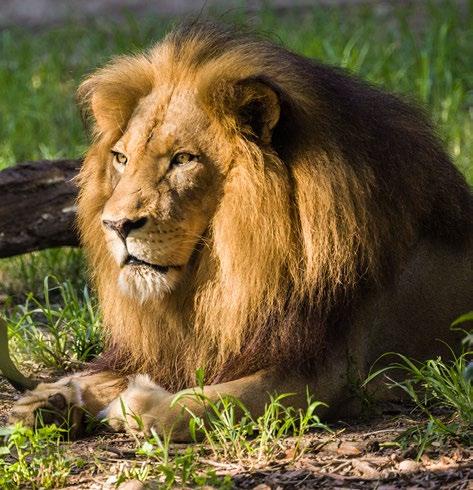
2 minute read
What's New
Births, Hatchings, and Acquisitions
By Donna Bear, Curator of Species Management
Advertisement

Acquisitions
Found in Ecuador and Peru, Anthony’s poison arrow frogs are Near Threatened under the IUCN Red List, though no local status is listed yet. These frogs are diurnal (active during daytime) and breed during the rainy season. They lay 15-40 eggs in the leaf litter, and the male provides parental care for up to two weeks until they hatch. The male moistens the eggs and carries the tadpoles on his back to a nearby stream or pool where his job is considered done. The tadpole’s metamorphosis is about 60 days. The adults eat arthropods, mostly small insects. They have skin toxins like other poison arrow frogs but are less toxic than others of the species, derived from their diet. The skin secretions have been used in medical research as a non-opioid pain killer.
Waldrapp Ibis (Geronticus eremita)
Also known as the northern bald ibis, the Waldrapp ibis was historically present in the European Alps, Northern Africa, and the Middle East. Today, there are only two remaining populations in Morocco and Turkey. Ninety percent of the world population can be found in Morocco. The birds are found in the semi-arid desert steppe regions and breeds in a small area in Syria. The population was thought to be extinct in the wild until it was found again in 2002. Since that time, reintroduction has occurred. These birds are monogamous and only have one mate during their lifetime. In the wild, this species typically lives 10-15 years; however, they can live up to 40 years in captivity. Considered Critically Endangered by the IUCN, this is the first breeding for the Waldrapp ibis at the Jacksonville Zoo. We are proud to contribute to this species as a whole.

Mandrill (Mandrillus sphinx)
Mandrills are found in southwestern Cameroon, western Gabon, Equatorial Guinea, and southwestern Congo. They reside in the rainforests and are adapted to live on the ground. They are the largest of all monkeys. Mandrills are omnivores that live in troops headed by a dominant male with multiple females and offspring. Ushindi, the father of our newest mandrill offspring, was born at the Zoo in 2002. He was sent out on loan to Zoo New England and then the Houston Zoo and recently returned to us in 2018 as our breeding male. There have been 19 mandrills born at Jacksonville Zoo and Gardens from 1954 to present. Mandrills are considered Vulnerable with IUCN, Appendix I with CITES, and Endangered with the USFWS. There has been a drastic decline in mandrill populations due to habitat loss and human consumption in the bushmeat trade.
April–June, 2020
Births & Hatchings
0.0.381 ........................................... Striped newts 0.0.3............................................ Black-faced ibis
0.0.4....................................... Blue-bellied roller 0.0.14 .............. *Anthony’s Poison Arrow Frog 0.0.2....................................................... Inca Tern
0.0.6....................................... Roseate Spoonbill 0.0.5 .........................................*WALDRAPP IBIS
LEGEND: 0.1.2
First digit male. Second digit female Third digit sex unknown Two digits only represent male and female CAPS = Endangered Species * (Asterisk) = First time at the Zoo










